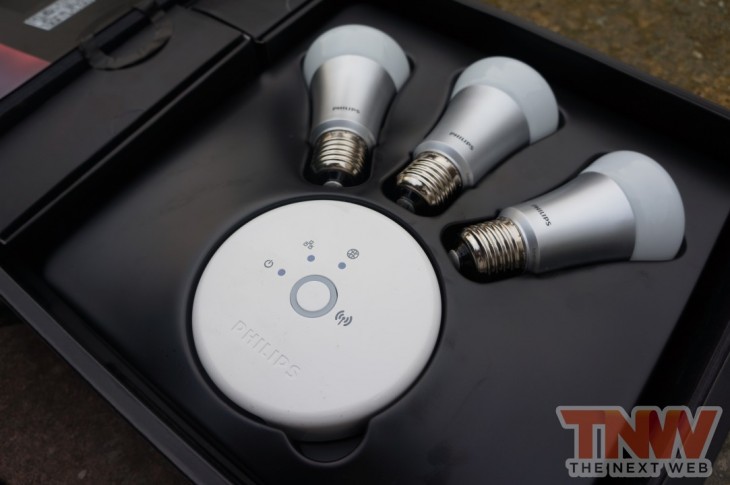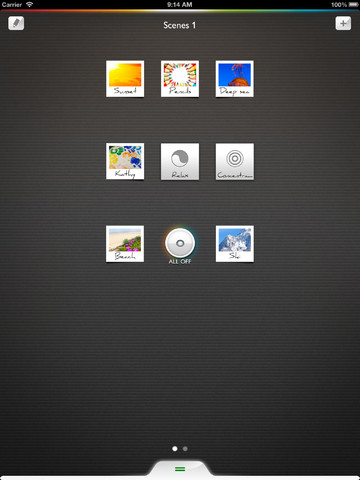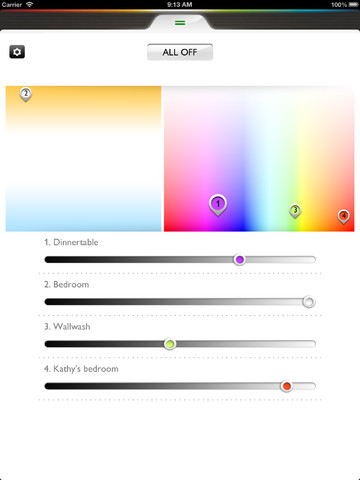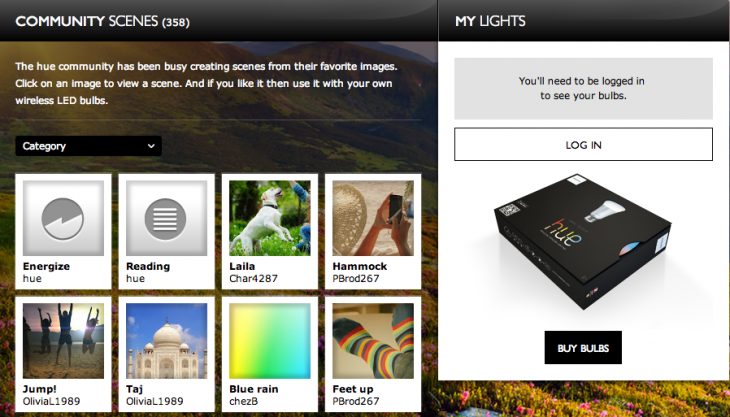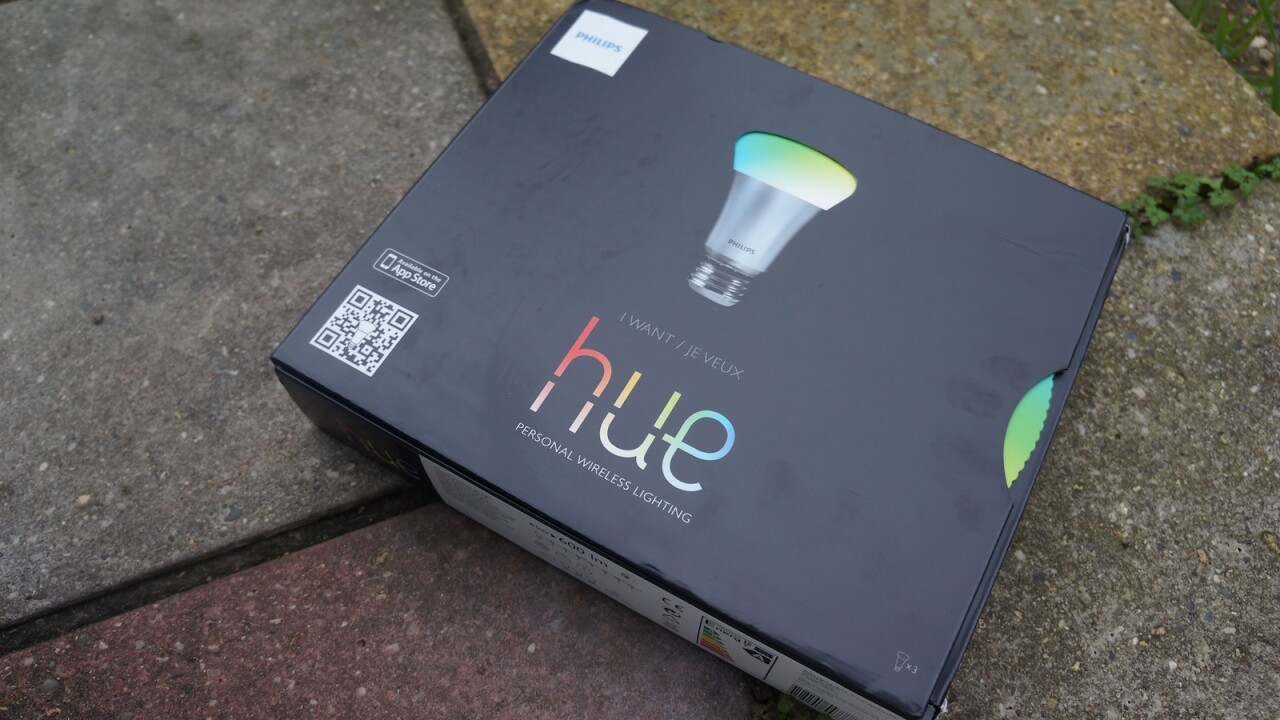
The home automation market is ripe with innovation, but it’s the smart LED light bulb that appears to be high on the list of priorities for many electronics companies.
In the last six months, a number of companies have begun marketing their own connected LED bulbs, not only offering control over luminescence but also impressive energy-saving characteristics and the ability to connect them with other smart devices in the house.
The Next Web has covered the LIFX Kickstarter project in the past but there are also solutions from Greenwave Reality and Insteon that have enjoyed media coverage in recent months. Dutch electronics giant Philips decided it wanted a piece of the action and launched its new Hue product, a set of three connected bulbs capable of displaying a full spectrum of color using just a smartphone app.
Philips gave us the chance to play with its new connected bulbs – are they worth their $199.95 price tag? Read on to find out.
Design
Philips has gone to great lengths to market Hue as a premium product, packaging three bulbs and the base station in a black box that opens like a book to reveal a small instruction wheel that explains how to set up the product. Also included in the box is a power cable for the base station and a white network cable, allowing you to connect it to a router or a network switch.
Looking to appeal to a wider consumer market, the bulbs are fitted with Edison fixings (E26 or E27 cap), allowing you to screw them into your existing lighting products. The company says that it is working to launch a range of bayonet-fitted bulbs but for now you will only be able to use the product with your screw-capable lamps and lighting products, unless you grab yourself a converter.
Screwing the bulbs into place was as easy as, well, screwing a bulb into a light fixing. The beauty of the product is that it can be used in any fixing around the house (as long as it is in range of the base station), allowing you to set them up in various rooms around the house – or maybe even surprise visitors by utilising one as your outdoor security light.
Philips advertises the fact that the bulbs output 600 lumens — the same as a traditional 50 watt bulb — supporting up to 50 bulbs. The bulbs integrate with both iOS and Android devices and offer up to 80 percent less power than a traditional bulb (lasting as long as 15 years or 15,000 burning hours).
In Use
When you’ve connected the base station to your router and fixed your bulbs in place, it’s time to pair them.
This is as easy as downloading the Philips Hue iOS or Android app, opening it (while ensuring that it is connected to the same wireless network) and letting it search for the base station. If it isn’t able to pair with the base station, it will ask you to hit the circular button on the top, immediately connecting your smartphone or tablet with the bulbs.
It’s a setup process that takes seconds at the most, and allowed us to connect an iPhone and iPad very quickly.
Philips Hue utilises the open ZigBee Light Link standard. This also means other products can integrate with them, but it isn’t limited to just lighting products. Its interoperability allows users to control LED fixtures, light bulbs, timers, remotes and switches, so if you have existing ZigBee-connected products, you might be able to automate your home further.
Control of the lights is app-based, so you are going to spend a lot of time tuning the lighting in your home/office/business so that it fulfils your needs.
Once connected, the app will display a list of ‘Scene’ (or LightRecipe) presets which are derived from real world environments and objects. For example, the first page of presets includes: Sunset, Pencils, Deep Sea, Kathy, Relax, Concentration, Beach and Ski.
However, before you change any of the lighting levels or colors, the bulbs will produce a nice, bright white light that is considerable brighter than a traditional bulb.
The presets aren’t predefined colors that match what a designer believes they should display – the app is capable of selecting colors from a photo and matching the elements within it. You have your three bulbs, so a beach preset might select the sky for one of them, the sand for another with the third matching the color of your beach towel.
Each bulb and color can be edited if it is too bright or colorful, simply by hitting the setting button and selecting a different color from the palette (or choosing another part of a photograph). The brightness of the bulbs can be increased or decreased using the slider.
Of course, you have the option of adding your own scenes, which again can be derived from photos you have snapped and saved to your Camera Roll.
If you are creating your own, you may decide that you want a calming lighting scheme when you get back from work. With this in mind, Philips has added timing settings to scenes which allow bulbs to be switched on and off at a certain time. There’s also a neat feature that will gradually increase the light level of your chosen scene, which is brilliant if you want to be woken in the morning with a simulated sunrise, when in fact it is cold, miserable and raining outside.
Adding a sense of community, Philips provides a simple interface for users to upload their Light Recipes, sharing them on the Philips website. You can copy each Recipe and bring it into the app on your smartphone and tablet, similar to how IFTTT operates on the Web.
Other than that, there isn’t much else that connects you with other users, but this is just the start.
While the experience is heavily visual, there are some minor annoyances. If you find yourself playing with a certain scene and you want to revert it back to its default level, I was unable to find a way to do so. The only way that I was able to get the lights back to a default level was to turn the lamp on and off manually, restoring it to its natural white light.
This works the other way around if you want the lights to display a present when they are switched on – but Philips probably chose to output a nice natural white light to match most people’s existing lighting usage (come in – switch on the light – illuminate room).
Speaking of turning lamps on and off – the connected nature of the bulbs allows you to turn all of them all using the “All Off” button. This means that you can leave lamps/switches on and change the settings when you wake up or when you feel like it – it’s a lazy person’s dream. Because they are energy efficient, leaving the lamps on is considerably less costly (but not always recommended).
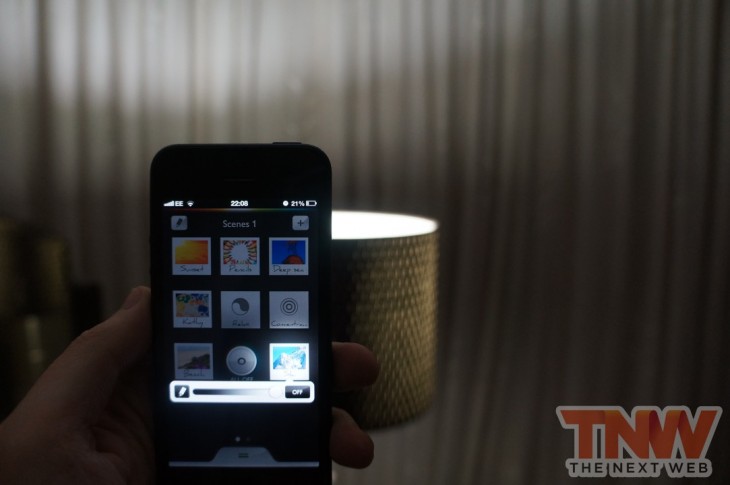
Concluding Thoughts
Priced at $199/£179.95 ( and additional bulbs costing $59/£49.) Philips Hue isn’t cheap. However, it’s only when you use the bulbs and the app for a sustained period of time that you realise how useful they are.
Completely app-based, the bulbs can be controlled by any iOS and Android device connected to the same network – this is a major plus. In my tests, I connected my iPhone and iPad mini, while my wife connected her iPhone. This meant that when we were in different rooms — my reading in the living room and me playing on the Xbox in the office — different color temperatures and brightness could be employed to suit that setting.
It also means you can prank your significant other, but I wouldn’t recommend you do this if you don’t like the idea of sleeping on the sofa.
Even if you don’t use the different settings, you can still use the Philips bulbs as normal, filling your home with bright light. A feature that isn’t discussed above that also comes in handy is remote access — providing an easy way to switch your lights on or off wherever you are in the world — great if your plans overrun and you want to give the impression that someone is home.
As it stands, the Hue lamps are a luxury buy (helped by the fact they are exclusively available on and at the Apple Store) but with open standards and Philips dedicating resources to continue iterating the product (and welcoming developers), the product’s best times might yet be ahead of it.
Get the TNW newsletter
Get the most important tech news in your inbox each week.
